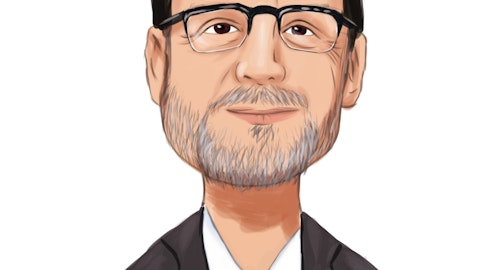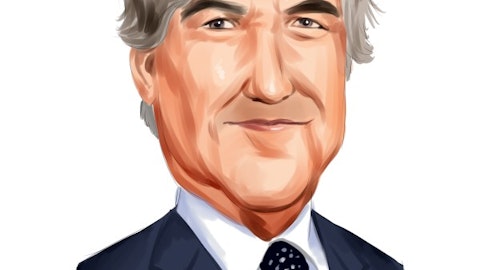Nicholas Thillman: Very helpful. And then maybe just going back to what you were saying about non-encumbering the portfolio, what was like the rate differential between the secured and unsecured options?
Brent Smith: Yes, I think even within a secured standpoint, and I noted this on the call, LTVs were very low, so we were encumbering a number of assets, frankly, more than we would have anticipated to. And the pricing was better than the unsecured market but I wouldn’t say materially better, particularly if you think about some of the assets that we might have put debt on where our most, I guess, long-term in terms of its wealth and probably candidates for harvesting in terms of value, because they’ve been maximized and mature under ownership, which would have created prepayment penalties in addition to the interest expense incurred. So, really, we felt like the delta between secured and unsecured was within 100 basis points and we frankly feel like keeping the portfolio unsecured, as we’ve talked about, is a key component of our leasing strategy today and overall our capital recycling strategy once we’re able to continue with that engine of growth when things normalized in the market.
So given that lack of material discrepancy in pricing and the benefits of remaining unsecured, we decided to take the window within the market here in the past few days.
Nicholas Thillman: Right and then maybe last one. It sounds like discussions for U.S. Bank are moving along here. You guys have traditionally or like in the past have said somewhere between 50% to 100% on the downtown renewal. It sounds like we’re trending more to the upper end of that range. Is that that kind of reading into your comments?
Brent Smith: That’s fair to say yes.
Nicholas Thillman: Okay. Thanks, guys.
Brent Smith: Thank you.
Operator: Thank you. [Operator Instructions] Your next question is coming from Dylan Burzinski from Green Street. Your line is live.
Dylan Burzinski: Good evening, guys. Thanks for taking the question here. I guess just touching on dispositions and transaction markets, could you comment on sort of the environment today versus maybe three to six months ago? I think it is improving with regards to liquidity coming back to the private capital markets or are things still tough?
Brent Smith: I would say maybe improvement on a very, very small margin but I still think we’re going to be in a time period here where there’s going to be a lot of headline risk, a lot of defaults and keys being thrown back. Hopefully there’s someone there to catch them but, frankly, right now the lenders aren’t really interested in taking the assets either, so I think we’re going to have a time period here or call it 12 months to 18 months where we’re going to continue to deal with some of these issues. And without any debt, there is no equity, so transaction volumes continue to be elusive and, as a result, a sense of pricing and price discovery in the market and, frankly, clarity around underwriting and what an exit cap rate should be is very difficult and that continues to weigh on overall transaction volumes.
As we’ve talked about, those buyers that we’ve been approached by the market are generally non-institutional, they are local private equity, local family office who understand the nuances of the market, and see opportunities to either not have a competitive bidding pool and/or get a great price. So I think we continue to be very patient in that marketplace, recognizing that we do have some good assets that should garner fair value, once things open back up. Houston is under contract, we are being patient with the buyer to find financing, but we’ll continue to look at other alternatives as dispositions as well, and still guide to accomplish somewhere between $100 million to $200 million of disposition in the next six months to 12 months.


